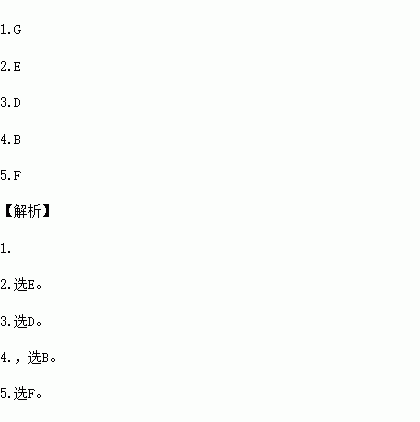题目内容
根据短文内容,从短文后的选项中选出能填入空白处的最佳选项,选项中有两项为多余选项。
What makes one person more intelligent than another? What makes one person genius, like the brilliant Albert Einstein, and another person a fool? Are people born intelligent or stupid, or is intelligence the result of where and how you live? 1..
We know, however, that just being born with a good mind is not enough. In some ways, the mind is like a leg or an arm muscle. 2.. Mental exercise is particularly important for young children. Many child psychologists think that parents should play with their children more often and give them problems to think about. 3..If, on the other hand, children are left alone a great deal with nothing to do, they are more likely to become dull and unintelligent.
4..According to some psychologists, if parents are always telling a child that he or she is a fool or an idiot, then the child is more likely to keep doing silly and foolish things. So it is probably better for parents to say very positive (helpful) things to their children, such as “That was a very clever thing you did.” or “5..”
A.A healthy body contributes to one’s intelligence.
B.Parents should also be careful with what they say to young children.
C.What people want express is like this.
D.The children are then more likely to grow up bright and intelligent.
E.It needs exercise.
F.You are such a smart child.
G.These are very old questions and the answers to them are still not clear.
| A. | caters to | B. | accounts for | C. | compensates for | D. | submits to |
| A. | could | B. | might | C. | should | D. | need |
| A. | to check | B. | checking | C. | checked | D. | check |


 Snow Queen and The Ugly Duckling, and some end unhappily, like the Little Match Girl. In The Little Mermaid the author expressed a longing for the ordinary life that he had never had. Andersen never married, and he died in his home in Rolighed in 1875.
Snow Queen and The Ugly Duckling, and some end unhappily, like the Little Match Girl. In The Little Mermaid the author expressed a longing for the ordinary life that he had never had. Andersen never married, and he died in his home in Rolighed in 1875.